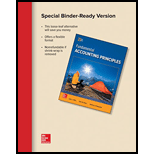
1)
Introduction:
Ratio Analysis
• Ratio analysis is a study of several key metrics of a company based on the data presented in its’ financial statements with an objective to evaluate the financial health of a company.
• It is essential for investors, stakeholders, government bodies etc. to evaluate the key metrics of an entity in order to ensure that the company fulfills the going concern principle and displays financial stability.
The key metrics mentioned above include the following:
•
• It seeks to measure the relation to the cash flows earned on the total assets i.e. the resources employed by the business to directly or indirectly increase revenue or reduce costs.
To Determine:
Recent two years cash flows to assets ratio of Samsung
2)
Introduction:
Ratio Analysis
• Ratio analysis is a study of several key metrics of a company based on the data presented in its’ financial statements with an objective to evaluate the financial health of a company.
• It is essential for investors, stakeholders, government bodies etc. to evaluate the key metrics of an entity in order to ensure that the company fulfills the going concern principle and displays financial stability.
The key metrics mentioned above include the following:
• Cash flows on Total Assets – A measure of the total returns on investment in the form of assets. It is an indicator of the profitability of the assets employed by the business.
• It seeks to measure the relation to the cash flows earned on the total assets i.e. the resources employed by the business to directly or indirectly increase revenue or reduce costs.
To Determine:
Comparison of cash flows to assets ratio of Samsung to that of Apple and Google.
Want to see the full answer?
Check out a sample textbook solution
Chapter 16 Solutions
Loose Leaf for Fundamental Accounting Principles
- Socrates Manufacturing's budget for the coming year includes $840,000 for manufacturing overhead, 95,000 hours of direct labor, and 600,000 hours of machine time. If Socrates applies overhead using a predetermined rate based on machine hours, what amount of overhead will be assigned to a unit of output which requires 0.80 machine hours and 0.30 labor hours to complete?arrow_forwardNeed Please solve this question by using appropriate method.arrow_forwardNeed help with this question solution general accountingarrow_forward
- General Accounting Questionarrow_forward1. How does an accounting system provide accurate calculations to prevent errors? 2. What are potential concerns related to data security? 3. How does an accounting system save time?arrow_forwardI need help solving this general accounting question with the proper methodology.arrow_forward

 AccountingAccountingISBN:9781337272094Author:WARREN, Carl S., Reeve, James M., Duchac, Jonathan E.Publisher:Cengage Learning,
AccountingAccountingISBN:9781337272094Author:WARREN, Carl S., Reeve, James M., Duchac, Jonathan E.Publisher:Cengage Learning, Accounting Information SystemsAccountingISBN:9781337619202Author:Hall, James A.Publisher:Cengage Learning,
Accounting Information SystemsAccountingISBN:9781337619202Author:Hall, James A.Publisher:Cengage Learning, Horngren's Cost Accounting: A Managerial Emphasis...AccountingISBN:9780134475585Author:Srikant M. Datar, Madhav V. RajanPublisher:PEARSON
Horngren's Cost Accounting: A Managerial Emphasis...AccountingISBN:9780134475585Author:Srikant M. Datar, Madhav V. RajanPublisher:PEARSON Intermediate AccountingAccountingISBN:9781259722660Author:J. David Spiceland, Mark W. Nelson, Wayne M ThomasPublisher:McGraw-Hill Education
Intermediate AccountingAccountingISBN:9781259722660Author:J. David Spiceland, Mark W. Nelson, Wayne M ThomasPublisher:McGraw-Hill Education Financial and Managerial AccountingAccountingISBN:9781259726705Author:John J Wild, Ken W. Shaw, Barbara Chiappetta Fundamental Accounting PrinciplesPublisher:McGraw-Hill Education
Financial and Managerial AccountingAccountingISBN:9781259726705Author:John J Wild, Ken W. Shaw, Barbara Chiappetta Fundamental Accounting PrinciplesPublisher:McGraw-Hill Education





